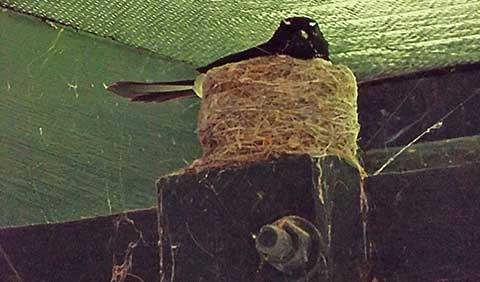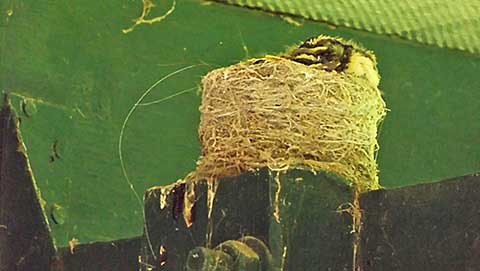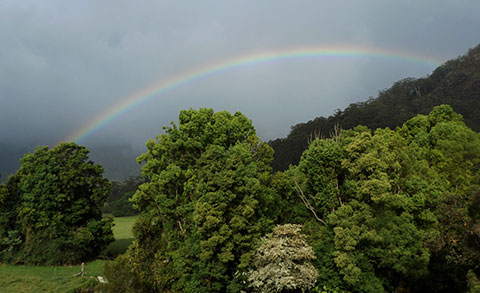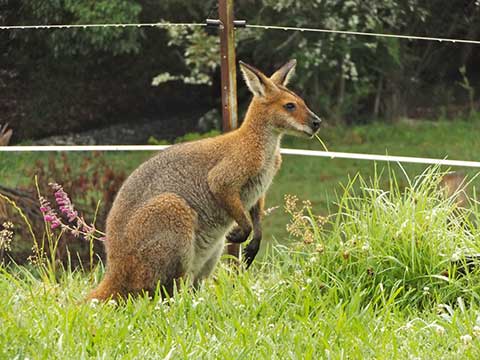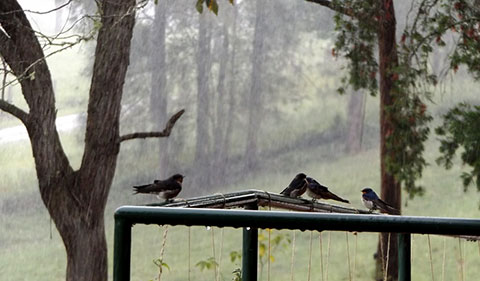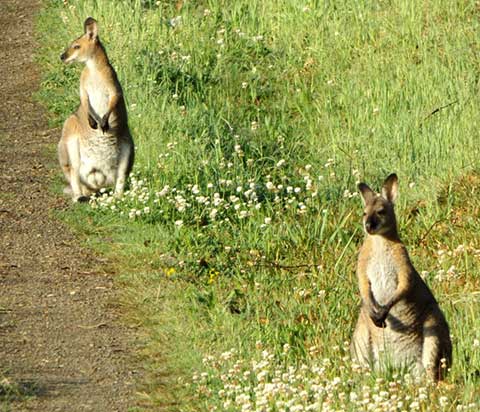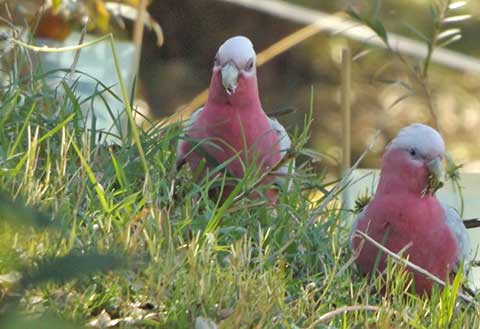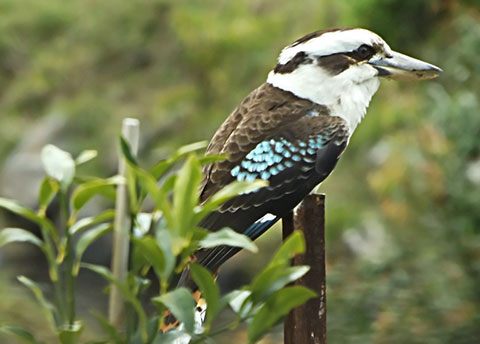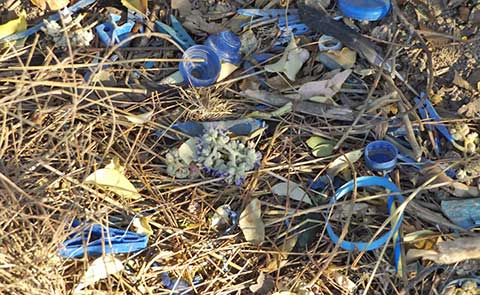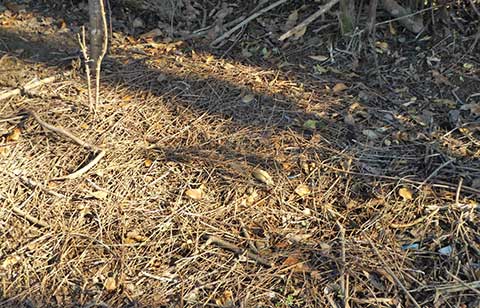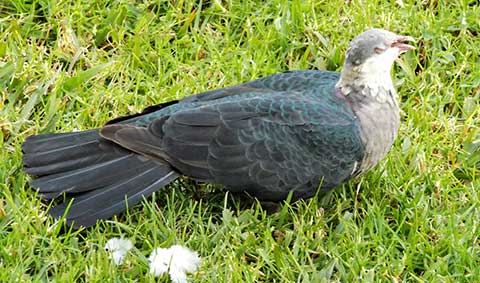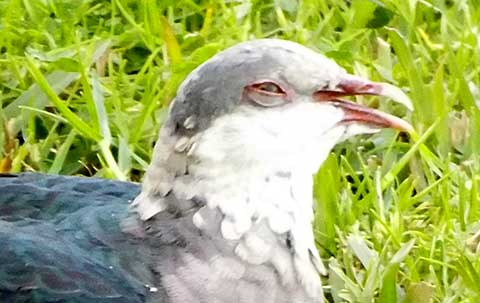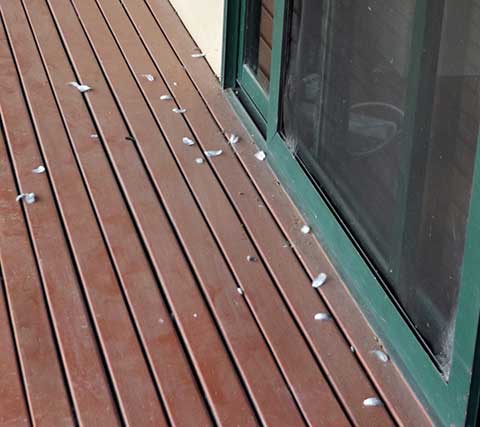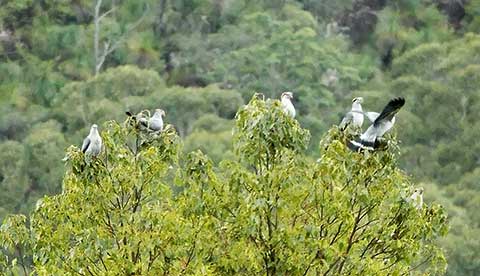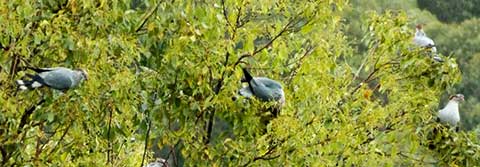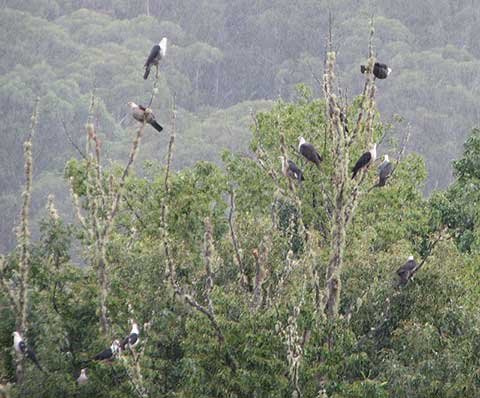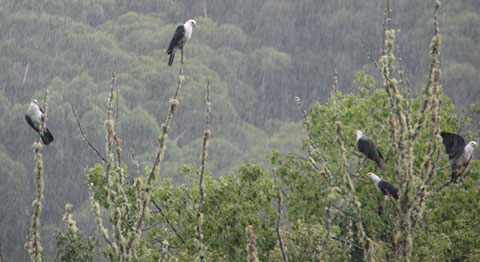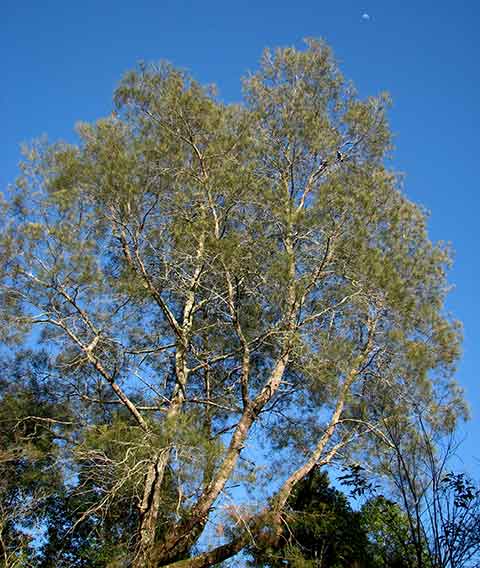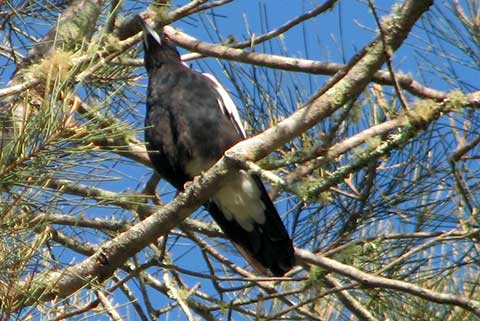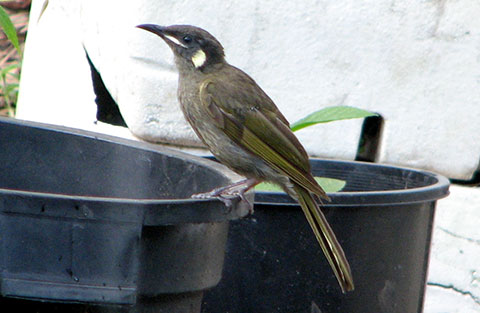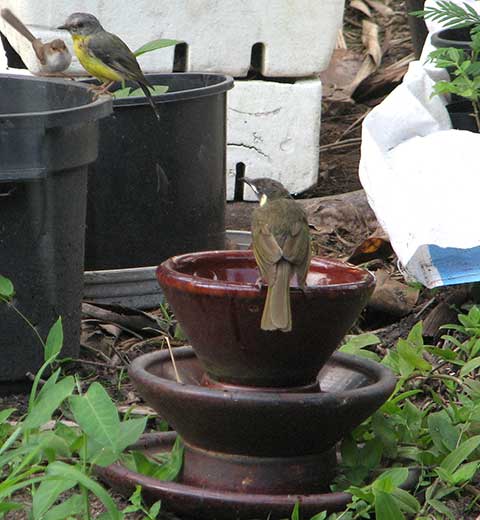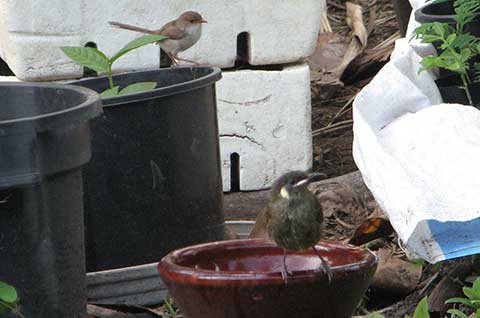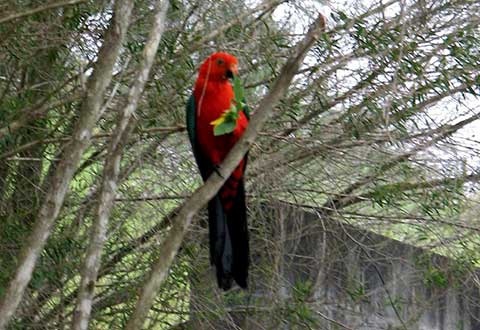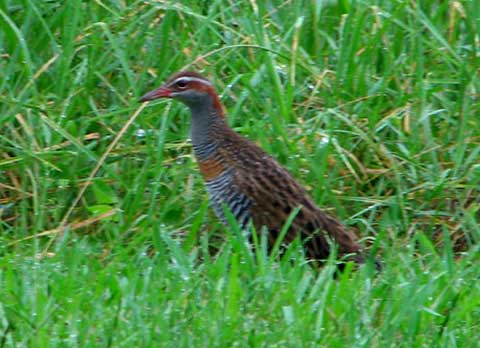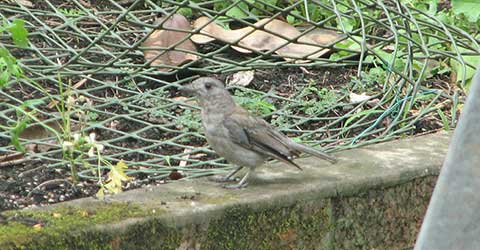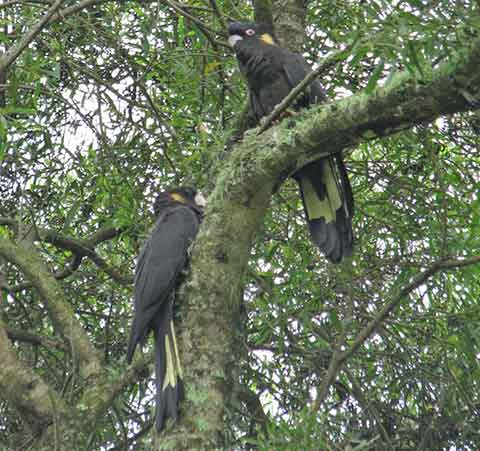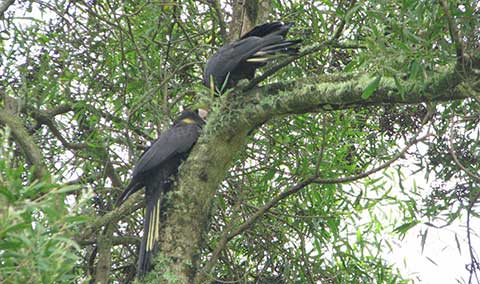The three baby Willy Wagtails grew so very fast that in less than a week they were treading on top of each other in their tiny nest, and taking turns to flap their wings.
Hearing a prolonged — well, perpetual — chattering from the verandah, I went out to see both parents in a right tizz, and not wanting me there at all.
The reason was a young one, wedged in under a roof batten, a few metres from the nest.
I went inside to ease the panic and hope for the best. It seemed far too soon for a baby to be out.
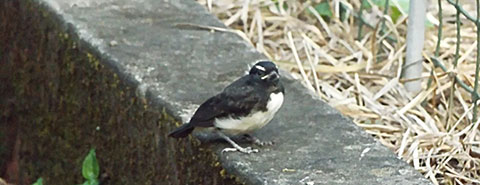
Ten minutes later the chattering was coming from two directions. The baby had flown out to the vegie garden edging, so one parent had to keep watch out there, which it did from the top of the water tank.
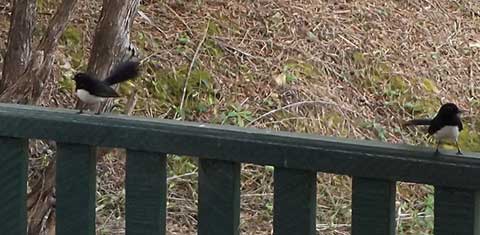
The airspace out here was being guarded even more vehemently, with a baby on the ground.
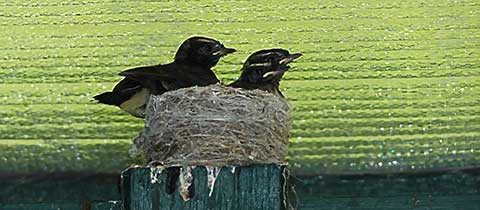
But two more remained in the nest, so the parents had to patrol two nurseries.
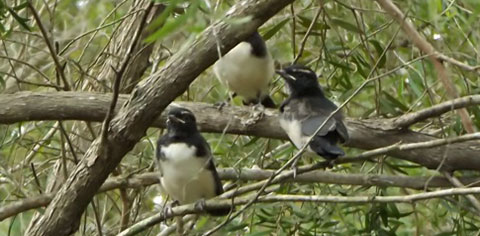
Not for long. Next day the nest was empty and the whole Wagtail family was doing aero wheelies out the back and taking their ease in the ti-trees.
Less than a week from eggy nestlings to daredevil teens!

